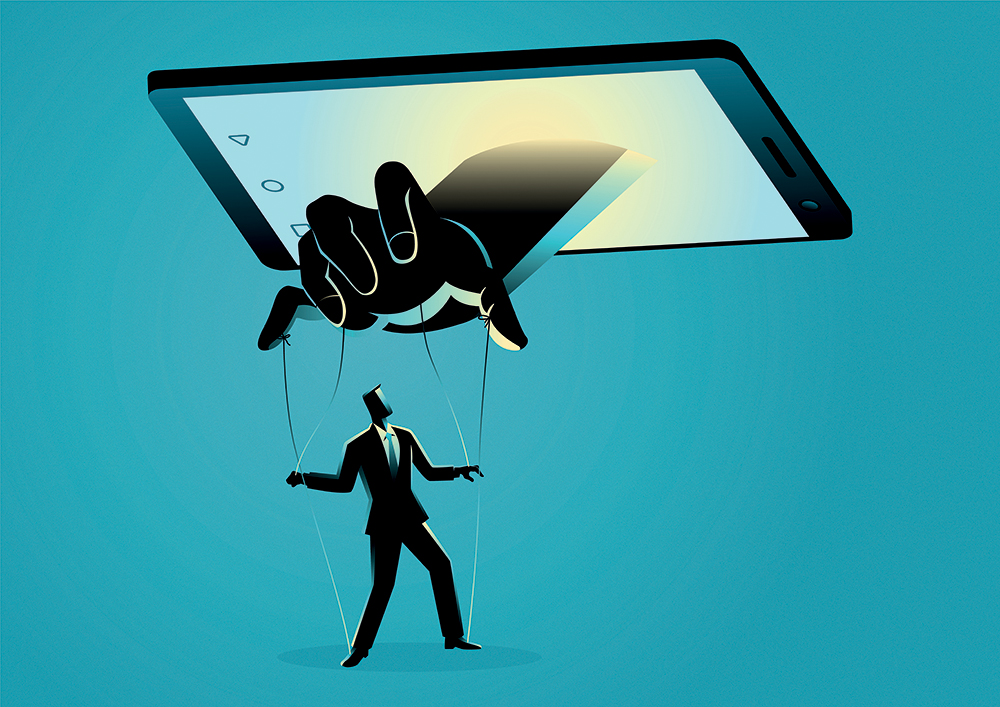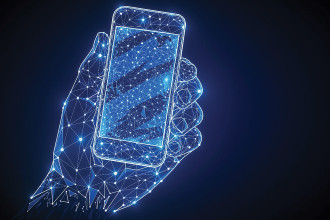
Are you on social media, using the internet, or playing games online extensively? You are not alone if you think you could be addicted to your digital gadgets. Take a look at these alarming figures: an estimated 210 million people throughout the world struggle with social media addiction. As of the beginning of 2020, Nepal’s smartphone penetration rate was above 60%. In one webinar, Dilli Ram Adhikari, former Managing Director of Nepal Telecom, stated that the figure was above 60%. The most recent financial report from Ncell for 2020 reveals that 65% of its customers now own smartphones. Hence, more than 68% of Nepalis currently own cellphones. This is in the same ballpark as the global average for smartphone penetration. And why do people buy smartphones – definitely to get on the internet.
While it is not a recognised diagnosis, some psychologists think that addiction to media and digital gadgets is comparable to addiction to drugs. When technology negatively impacts a user’s life and is hard to quit using despite this, this is known as digital addiction. Psychology and psychiatry disagree on how to approach the problem of digital addiction. Some psychologists think that abusing digital technology has a similar pattern to abusing drugs or alcohol. Some think that using technology often is typical in modern life and that abusing it is a symptom of deeper issues rather than true addiction.
While it is clearly evident that digital technology is a reality of modern day lives, when it borders on addiction, it has multiple negative affects like impacting interpersonal ties, depleting focus, and generally making people less creative. Snapchat, TikTok, Facebook and Instagram are just a few examples of social media platforms and applications that designed to keep you addictive. Large internet companies have a lot to gain by keeping you on their platforms for as long as they can; the longer we stay on a website or app, the more money they make from advertising.
Apps developed by tech corporations that have us coming back time and time again leverage behavioural design. The unending scroll of most social media platforms ensure that there is no limit to our intake of updates, photographs and advertisements. ‘Like’ buttons and commenting capabilities draw us in and tempt us to check our ‘scores’ on these applications. These characteristics are not by chance.
You might want to take action to make a bit more room in your head if you feel that you are spending more than needed time in the virtual world. You may want to also make note if your time on phone usage is impairing your capacity to be a good friend, husband or parent. While it isn’t realistic to lead a totally smartphone or digital device-free existence these days, a better strategy maybe to control compulsive behaviour by limiting phone use and establishing a more positive, healthy connection with online time. Start with a 12- to 24-hour digital detox which will help you reset your brain’s neural connections and gain perspective on your relationship with screens. Every day, set aside a certain amount of time to just be still and think. Set your phone on ‘bedtime’ mode so that it will automatically turn off all notifications at a specific hour of the night. Use tools like Freedom or Space to set time limitations for applications or websites.
Try disabling all of your phone’s notifications. Remove the time-wasting or distracting apps from your phone. Have a ‘one screen’ rule in your home, which prohibits using more than one screen at once (i.e., no watching TV while browsing social media!). A more extreme strategy to stop mobile phone addiction is time-locking containers. Your phone will be locked in the container until the timer goes off if you place it there and set a timer for the duration of which you want it to be out of your reach. You are unable to access your phone or turn off the timer once it has been set. These pointers should have provided you some ideas on how to recognise and avoid the risks associated with digital addiction.
Digital addiction is real and there are several studies being done on it. Its incidence varies across the world, ranging from 8.90% in Eastern nations to 4.60% in Western nations. There is currently no agreement on how to define digital addiction or what terminology to apply to it. Several conceptualisations are used to describe it. According to studies, digital addiction is linked to social interactions, poor sleep, self-care issues, anxiety, and trouble executing everyday tasks.
It might be difficult to research available treatments for a problem that lacks a clear description. Nonetheless, the existence of people who seek professional assistance emphasises the need for better digital addiction countermeasures. Thus, it’s critical that digital addiction maintain conceptual clarity in the area with regard to definition, diagnostic standards, and countermeasure outcome metrics. The World Health Organisation’s recognition of Internet Gaming Disorder and the DSM-5’s emphasis on it for future study might be considered as initial steps toward conceptual clarity. Future studies should address the co-morbid psychiatric disorders that coexist with digital addiction such as attention deficit hyperactivity disorder, depressive disorder, mood disorder, impulse control disorder, and social avoidance disorder.
Digital addiction literacy is seen as a crucial factor in preventing, identifying, and treating digital addiction, establishing it through educational programmes has gained popularity. Such a proactive strategy can assist people in comprehending and managing their digital intake before it turns into problematic usage that need intervention. When assessing the effectiveness of countermeasures, it may be useful to look beyond changes in the symptoms of digital addiction, such as reported time spent using digital products and services.
One can analyse the efficacy of countermeasures in addressing the underlying processes of addictive behaviour by identifying the etiological factors, such as family functioning or psychological well-being that first create addictive symptoms. Current research on the definitions of digital addiction as well as studies on overcoming procrastination and Fear of Missing Out demonstrate that giving consumers the knowledge and resources to control their digital usage can help minimise addictive behaviour. These results imply that software developers can contribute to digital addiction prevention or early intervention by creating digital addiction-aware architecture and design.
READ ALSO:
Published Date: April 5, 2023, 12:00 am
Post Comment
E-Magazine
RELATED BitsNBytes


-1763358784.png)

-1758273007.jpg)
